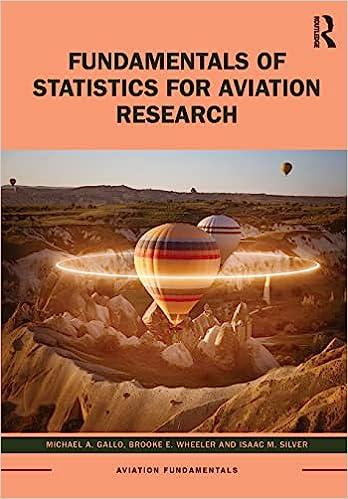9. A study based on Smith-Jentsch et al. (1996) examined the effect of two factors involv- ing...
Question:
9. A study based on Smith-Jentsch et al. (1996) examined the effect of two factors involv- ing Part 121 pilots' assertiveness: Factor A = Number of prior negative events pilots previously experienced (None vs. At Least One). Examples of prior negative events included having previously flown with a captain who used unsafe procedures, having previously experienced a potentially life-threatening incident in which crew coordina- tion was a causal factor, and having been previously pressured to take a flight that the pilot felt uncomfortable taking because of weather or mechanical problems. Factor B =Treatment (Trained vs. Untrained) with pilots being randomly assigned to one of the two groups. The Trained group received 2 hours of assertiveness training taught by commercial pilots and designed to help pilots be more assertive in the cockpit dur- ing a conflict situation. The Untrained group did not receive any type of assertiveness training. One week after the training session, both groups participated in a simulated flight where their assertiveness skills were rated. The ratings ranged from 1 (least ef- fective) to 5 (most effective), and the simulated flight involved conflict situations that required assertiveness during the simulation. Figure 10.13 contains the interaction plot that resulted from data analysis. Which statement reflects an accurate assessment of the interaction?
a. There appears to be a significant interaction effect.
b. There appears to be a significant main effect with respect to Factor A.
c. There appears to be a significant main effect with respect to Factor B.
d. There appears to be a significant main and interaction effect.
Step by Step Answer:

Fundamentals Of Statistics For Aviation Research
ISBN: 9781032311463
1st Edition
Authors: Michael A. Gallo, Brooke E. Wheeler, Isaac M. Silver





